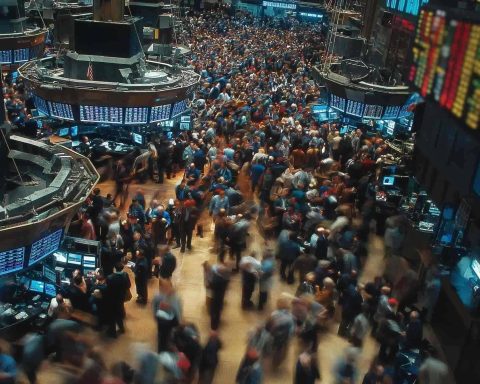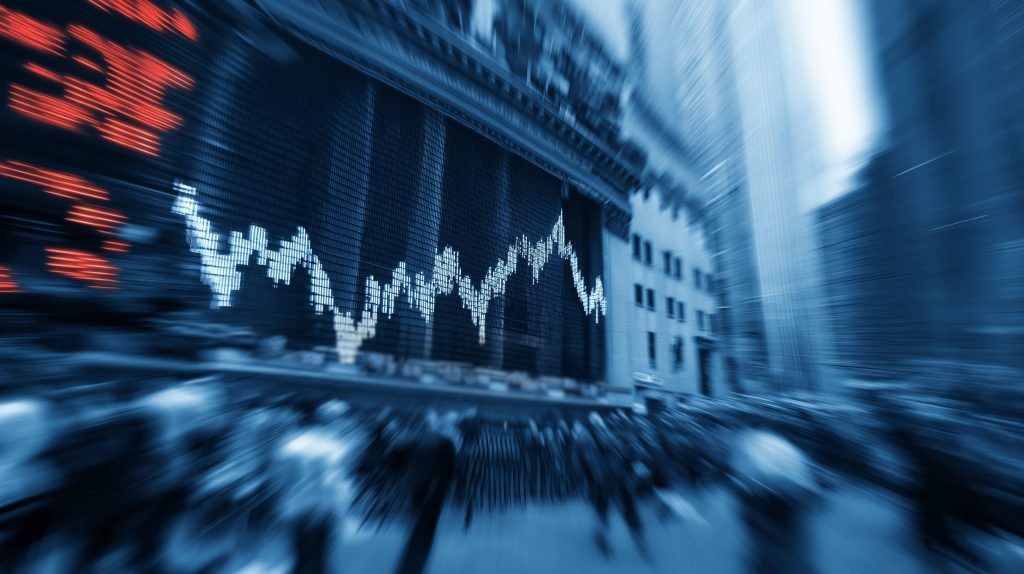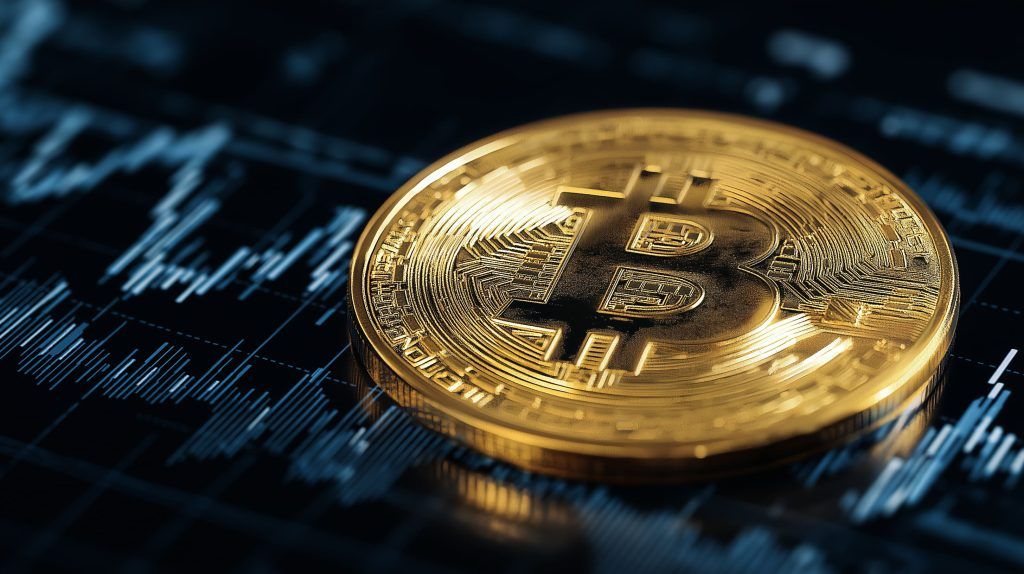- Gold hits record high: Gold prices surged past $3,900 per ounce for the first time on October 6, 2025, reaching an intraday peak around $3,944/oz as investors flocked to safe-haven assets amid economic and political uncertainty [1].
- Silver’s 14-year high: Silver traded up to about $48.5/oz – its highest level since 2011 – on supply squeeze fears, closing last week around $47.6 and up roughly 64% year-to-date, far outpacing gold’s gains [2].
- Platinum & palladium climb: Platinum crossed the $1,600/oz mark (a 12-year high) on robust industrial demand and South African supply woes, while palladium hovered near $1,264/oz, up modestly as automotive demand underpins prices [3].
- Safe-haven drivers: A looming U.S. government shutdown, a sharp drop in the Japanese yen, and expectations of Federal Reserve rate cuts fueled a rush into precious metals [4]. The weaker dollar and geopolitical jitters added further support [5].
- Expert forecasts diverge: Big banks are increasingly bullish – UBS sees gold breaking $4,000/oz by year-end, and Goldman Sachs forecasts new highs by mid-2026 [6]. But some analysts warn of near-term overheating, suggesting a healthy pullback could occur even amid an extended uptrend [7].
- Supply crunch in focus: Years of underinvestment and mine disruptions have created structural deficits in metals like silver and platinum, tightening inventories. Analysts note silver stockpiles are at critically low levels with “less than four months” of available supply left in London vaults at current demand [8], underscoring the potential for further price spikes.
Gold Shines as Investors Seek Safety
Gold is leading the precious metals rally, driven by a perfect storm of safe-haven demand and policy tailwinds. On Monday, October 6, spot gold jumped about 1% to an all-time high near $3,925/oz in early trading, after briefly touching $3,944/oz [9]. U.S. gold futures likewise surged over 1%, reflecting robust global interest in the yellow metal. This milestone marked gold’s fifth straight weekly gain, underscoring its role as a refuge amid market turmoil [10].
Several factors converged to spark gold’s record run. In Asia, a steep plunge in the Japanese yen – after the election of fiscal-dove Sanae Takaichi as Japan’s next prime minister – left investors with “one less safe-haven asset to go to, and gold was able to capitalise,” explained Tim Waterer, chief market analyst at KCM Trade [11]. At the same time, the U.S. government shutdown dragging into its second week has cast a cloud over the U.S. economy. With Washington in gridlock, a senior White House official even warned Sunday that the administration could begin mass federal layoffs if budget talks remain stalled [12]. This political uncertainty, alongside a murky economic outlook as key data releases like U.S. payrolls are delayed, has intensified the flight to safety [13].
Monetary policy expectations are further stoking gold’s ascent. Federal Reserve officials have struck a dovish tone – Fed Governor Stephen Miran on Friday pressed for an “aggressive rate cut” trajectory, citing headwinds from current economic policies [14]. Markets are now pricing in a 0.25% Fed rate cut at the end of October (with a 95% probability) and another in December (≈83% probability) [15]. Such prospects of lower interest rates, combined with a softening dollar, make non-yielding assets like gold more attractive. “Traders are depending on private reports for clarity on the economy” during the data blackout, and still “pricing in a quarter-point cut for the end of the month,” which will benefit gold as it pays no interest [16].
Gold’s roughly 50% year-to-date surge has been underpinned not only by short-term catalysts but also by strong fundamental demand. “The rally has been helped by strong central bank buying, increased demand for gold-backed ETFs, a weaker dollar and interest from retail investors seeking a hedge amid rising trade and geopolitical tensions,” Reuters noted [17]. Central banks globally continue to accumulate gold as a reserve asset – India’s central bank (RBI), for example, is among the top gold buyers of this decade (behind only China, Poland and Turkey) as nations diversify away from the U.S. dollar [18].
Many analysts believe the conditions for gold remain favorable. “With more US rate cuts expected, we believe gold can break $4,000 per ounce by year-end,” said a UBS research note, highlighting the supportive backdrop of looser monetary policy [19]. Goldman Sachs similarly sees gold exceeding $4,000 by next summer if current trends hold [20]. Even some central bankers have taken notice of gold’s new prominence. “Perhaps gold prices now are showing the kind of movement that oil used to [show] as a barometer of global uncertainty,” observed Reserve Bank of India Governor Sanjay Malhotra, suggesting gold has become the go-to gauge for investor anxiety [21].
Silver Nears $50 Amid Supply Squeeze Signs
Silver – often gold’s high-beta cousin – is experiencing an even more explosive 2025. Prices have rocketed to levels unseen in 14 years, fueled by both safe-haven interest and an acute supply/demand mismatch. On October 5, silver closed the week around $47.60/oz, within a hair’s breadth of its 2011 peak ($49.95), and continued climbing toward $48.5 on Monday [22]. The metal has now surged roughly 63–64% since January, outperforming even gold’s stellar run [23].
Investors are piling into silver on signs that physical supplies are tightening dramatically. “The #silversqueeze you can buy into,” is how TD Securities commodity strategist Daniel Ghali described the current environment [24]. He noted that free-floating stockpiles in London – a key trading hub – have fallen to critically low levels. In fact, at current rates of industrial usage and exchange-traded-fund (ETF) inflows, “there are probably less than four months” of available silver left in London vaults before inventories run dry, Ghali warned [25]. This stark assessment comes as lease rates for silver (the cost to borrow the metal) have spiked to “extreme” levels, signaling scarcity in the marketplace [26].
Data confirm the squeeze: London Bullion Market Association (LBMA) silver holdings have dwindled to roughly 135 million ounces – about half the volume that trades on paper each day [27]. Global stockpiles have been sliding amid five consecutive years of supply deficits in the silver market [28]. Heavy buying from India has accelerated the drawdown: Indian silver imports reportedly doubled in September, absorbing large quantities of bullion [29]. Meanwhile, China’s absence from the market during early October’s Golden Week holiday removed a key source of supply, intensifying the tightness [30]. The result is a classic squeeze scenario – one reflected in a ballooning paper-to-physical ratio (by some estimates, over 300 paper ounces claim each physical ounce [31]) and rising premiums for coins and bars on the retail side.
Despite silver’s blistering rally, analysts note that it still hasn’t hit its true historic highs when adjusted for inflation. The $49.45/oz peak from the famous 1980 Hunt Brothers episode would equate to roughly $192 today, and even the 2011 spike of ~$49 would be about $69 in today’s dollars [32]. In that context, current prices (around $48) are nearly 30% below the inflation-adjusted 2011 high and 75% below the 1980 record [33]. This suggests room for further upside if the frenzy continues. Some market watchers posit that a short-term overshoot toward $60–$75 is not out of the question. Given the extreme tightness, “a short-term technical target of $75 per ounce does not look far-fetched,” one analysis noted [34].
That said, the trajectory may not be a straight line upward. Ghali of TD Securities pointed to a potential “pressure release valve on the horizon” – for instance, higher prices could eventually unlock new supply or curb industrial demand – which might cool the rally before inventories are fully exhausted [35]. He cautioned that liquidity remains fragile, meaning silver’s wild price swings could continue in the near term [36]. For now, the silver-to-gold price ratio sits around 82:1 [37], which is high by historical standards. In past precious metals bull markets, this ratio often compressed below 60 as silver outpaced gold. The current elevated ratio implies that if gold keeps climbing, silver could have a lot more catching up to do – barring any intervening stabilization in the market [38].
Platinum and Palladium Ride Industrial Trends
Platinum and palladium – key platinum-group metals (PGMs) used mainly in automotive catalytic converters – are also benefiting from the broad precious metals upswing, though their stories are driven more by industrial fundamentals. Platinum in particular has been a standout performer in 2025. The metal pushed above $1,600/oz in late September, hitting its highest price since April 2013 [39]. As of October 6, platinum was trading around $1,608/oz, up ~0.2% on the day and an astonishing 80% higher than at the start of the year [40] [41]. Analysts say platinum’s strength comes from a confluence of steady demand and constrained supply.
On the demand side, auto industry and clean energy usage are providing tailwinds. About 70% of platinum demand comes from industrial and automotive applications (primarily diesel-engine catalytic converters and now hybrid vehicles), which makes it sensitive to economic cycles [42]. Yet despite global growth worries, platinum is seeing resilient automotive demand, partly because high battery-electric vehicle adoption is still gradual – many car buyers are opting for hybrids, which still require platinum-based catalysts for emissions control [43] [44]. Additionally, platinum is gaining momentum from the nascent hydrogen economy: the metal is a critical catalyst in proton-exchange membrane fuel cells and electrolyzers used for green hydrogen, an area expected to become “a meaningful component of global demand by 2030” [45]. Even jewelry demand for platinum is rebounding. With gold at record highs, platinum jewelry (especially in China) has become an attractive lower-cost alternative, contributing to a forecasted 11% jump in platinum jewelry offtake this year [46] [47].
The supply picture for platinum is notably tight, amplifying the impact of that solid demand. South Africa – which accounts for roughly 70% of the world’s platinum mine supply – has been beset by energy shortages, flooding, and underinvestment in mining infrastructure [48] [49]. These issues have crimped output for three years running. “The way I see it, platinum’s recent break of $1,600…shows that supply is under pressure,” said Eugenia Mykuliak, executive director at B2Prime Group [50]. “South African producers…face a lack of energy and underinvestment, while recycling volumes are weak. That’s why the World Platinum Investment Council sees an 850 koz deficit in 2025, marking three years in a row of shortage.” [51] Indeed, the World Platinum Investment Council (WPIC) forecasts global platinum mine output will fall ~6% this year, creating one of the deepest supply deficits on record (around 0.85 million ounces) [52]. For perspective, the platinum market was roughly in balance just a few years ago; now inventories are being drawn down as consumption far exceeds new supply.
Elevated platinum prices are providing some relief to miners’ margins but not enough to solve the structural issues. In late August, Northam Platinum’s CEO Paul Dunne told Reuters that even at $1,600/oz, “it is still not yet at levels that will support sustainable mining across the industry and certainly not the much-needed development of new operations.” [53] High power costs, declining ore grades, and project delays continue to cap South Africa’s output, suggesting that supply constraints will persist. This underpins a bullish longer-term narrative for platinum, though after the massive run-up, some analysts see potential for a short-term breather. (Mykuliak expects a modest correction from the $1,600 level in the near term, before the uptrend resumes on fundamentals [54].)
Palladium, meanwhile, has been quieter but steady. The metal ticked up to about $1,264/oz on Oct 6 [55], gaining roughly 0.3% for the day. Palladium is up around 25% year-to-date [56], recovering from a deep slump in 2022. Like platinum, palladium’s fortunes are tied to the auto sector – it’s used predominantly in catalytic converters for gasoline vehicles. Supply disruptions (Russia is a major palladium producer, and geopolitical factors have at times threatened that supply) and a broader precious metals bid have helped lift palladium this year. However, industry experts are more cautious on palladium’s outlook compared to other metals. The rise of electric vehicles, which don’t use catalytic converters, poses a long-term demand headwind. Auto sales trends are crucial: a slowdown in conventional car production or faster EV adoption could weaken palladium demand significantly. UBS, for example, “maintains a cautious view on palladium” due to its heavy reliance on an auto sector facing secular challenges [57]. Even with 2025’s rebound, palladium remains well below its all-time high (over $3,000/oz in 2021), reflecting those uncertainties. In the short run, though, palladium is finding support from the same forces lifting its peers – a softer dollar, investor diversification into commodities, and some substitution effect (industries can swap palladium for now-cheaper platinum in certain applications).
Another niche metal, rhodium, is also worth noting. Often one of the most volatile precious metals, rhodium has been relatively steady in recent weeks, holding around $7,300 per ounce with little change over the past few days [58]. Still, current rhodium prices are nearly 50% higher than a year ago [59], thanks to earlier supply tightness and strong automotive demand (rhodium is used in catalytic converters to reduce emissions). The rhodium market remains small and can swing wildly on minor shifts in supply. So far in early October, it has not participated in the dramatic rally to the same extent as gold or silver, but its elevated level underscores the broad strength seen across the precious metals complex in 2025.
Market Outlook: Caution Amid Bullish Fever
The overarching question for investors is: How long can the precious metals party last? With gold flirting with the once-unthinkable $4,000 level and silver on the cusp of $50, market sentiment is bullish – yet history reminds us that rapid climbs can invite sharp corrections. In the near term, much will depend on policy outcomes and macro developments in the coming weeks. A resolution of the U.S. government shutdown standoff could dampen some immediate safe-haven demand, whereas an escalation (or any shock like a debt-ceiling scare or geopolitical flare-up) could send new waves of buying into bullion. Likewise, all eyes are on the Federal Reserve’s late-October meeting. Should the Fed follow through on an expected rate cut – and especially if it signals more to come – that would likely keep gold well-supported (since lower rates reduce the opportunity cost of holding non-yielding assets) [60]. On the other hand, any hawkish surprise from the Fed could trigger a pullback in precious metals, given how much easing is already priced in.
Many institutional analysts remain structurally positive on precious metals for the medium term. Alongside UBS and Goldman’s calls for $4,000+ gold in the coming months [61], other banks have pointed to supportive factors like central bank buying and a lack of new mine supply. The backdrop of persistently high global uncertainties – from U.S. political turbulence to Europe’s energy woes and China’s economic jitters – is likely to keep safe-haven demand elevated. “The backdrop is intact with the Fed on path to cut rates further, alongside [a] weakening labor market,” noted Ahmad Assiri, an analyst at Pepperstone Group, acknowledging the pro-gold environment [62]. However, Assiri and others also urge a bit of caution after the steep rally: “It feels like the risk-reward dynamics are shifting and a tactical pullback would be viewed as a healthy phase within an extended rally,” he said [63]. In other words, a brief cooling-off in prices could actually strengthen the bull market’s foundations by shaking out speculative excess.
For silver, the outlook hinges on whether the current supply squeeze intensifies or abates. If inventory drain continues at the recent pace, it’s possible we’ll see silver make a run above the $50 milestone in the coming weeks. Traders will be monitoring indicators like LBMA vault reports, ETF flows, and lease rates for signs of relief or further stress. Any improvement in availability (for example, if high prices unlock dormant stock or if industrial users postpone purchases) might cap the upside. Conversely, if the physical shortage worsens, silver’s volatility could increase and push prices to fresh highs. The gold/silver ratio and inflation-adjusted targets suggest there could be significant upside left if bullish momentum persists [64]. That said, silver’s famously boom-and-bust history – it spiked to near-$50 in 2011 only to crash afterward – is a reminder that nimbleness is key for investors in this metal.
In the platinum group metals, much depends on industrial trends. Platinum’s strong fundamentals (ongoing supply deficits against steady demand) give it a positive bias, but it too is vulnerable to any demand slowdown if, for instance, the auto industry stumbles or if a global recession hits. Still, major institutions like the WPIC see the platinum market remaining in shortage, which should provide a floor under prices. Palladium faces a more fragile equilibrium; it benefits in the short term from any substitution away from platinum (jewelry and some industrial uses can swap in palladium when it’s cheaper) and from the general metals rally, but its long-term narrative is challenged by the EV revolution. Investors might therefore treat palladium with more caution, as reflected in relatively subdued speculative interest compared to gold or silver.
In summary, the first week of October 2025 has showcased an extraordinary rally across precious metals, driven by a mix of fear, policy shifts, and genuine supply constraints. Gold and silver are grabbing headlines with their record-breaking moves, but all the major precious metals – including platinum, palladium, and even rhodium – are part of this broader upward sweep. The consensus among bulls is that we are in a secular uptrend for the sector, supported by loose monetary policy and geopolitical hedging. Yet even bulls acknowledge the likelihood of volatility. As one veteran trader quipped, “Trees don’t grow to the sky – not even golden ones.” The coming days will test whether these metals can build on their gains or if a consolidation is due. For now, investors and analysts alike are closely watching each data point and policy signal, knowing that in this climate, any surprise could send precious metal prices into their next act – be it a continued climb or a sharp twist in the tale.
Sources: Gold and precious metals price data and market commentary from Reuters [65] [66] [67] [68]; Bloomberg/Moneycontrol [69] [70]; The New Indian Express [71] [72]; BullionVault (Adrian Ash analysis) [73] [74] [75]; Benzinga (Stjepan Kalinic) [76] [77] [78]; Investing News Network [79] [80] [81]; FXStreet analysis [82]; Metals Daily / FXStreet [83]; TradingEconomics/MoneyMetals (rhodium pricing) [84] [85].
References
1. www.reuters.com, 2. www.benzinga.com, 3. www.reuters.com, 4. www.reuters.com, 5. www.reuters.com, 6. www.bullionvault.com, 7. www.moneycontrol.com, 8. www.benzinga.com, 9. www.reuters.com, 10. www.bullionvault.com, 11. www.reuters.com, 12. www.reuters.com, 13. www.moneycontrol.com, 14. www.reuters.com, 15. www.reuters.com, 16. www.moneycontrol.com, 17. www.reuters.com, 18. www.bullionvault.com, 19. www.bullionvault.com, 20. www.bullionvault.com, 21. www.bullionvault.com, 22. www.benzinga.com, 23. www.benzinga.com, 24. www.benzinga.com, 25. www.benzinga.com, 26. www.benzinga.com, 27. www.benzinga.com, 28. www.benzinga.com, 29. www.benzinga.com, 30. www.benzinga.com, 31. www.benzinga.com, 32. www.benzinga.com, 33. www.benzinga.com, 34. www.benzinga.com, 35. www.benzinga.com, 36. www.benzinga.com, 37. www.benzinga.com, 38. www.benzinga.com, 39. investingnews.com, 40. www.reuters.com, 41. www.fxstreet.com, 42. investingnews.com, 43. investingnews.com, 44. investingnews.com, 45. investingnews.com, 46. investingnews.com, 47. investingnews.com, 48. investingnews.com, 49. investingnews.com, 50. investingnews.com, 51. investingnews.com, 52. investingnews.com, 53. investingnews.com, 54. investingnews.com, 55. www.reuters.com, 56. tradingeconomics.com, 57. www.metalsdaily.com, 58. www.moneymetals.com, 59. tradingeconomics.com, 60. www.reuters.com, 61. www.bullionvault.com, 62. www.moneycontrol.com, 63. www.moneycontrol.com, 64. www.benzinga.com, 65. www.reuters.com, 66. www.reuters.com, 67. www.reuters.com, 68. www.reuters.com, 69. www.moneycontrol.com, 70. www.moneycontrol.com, 71. www.newindianexpress.com, 72. www.newindianexpress.com, 73. www.bullionvault.com, 74. www.bullionvault.com, 75. www.bullionvault.com, 76. www.benzinga.com, 77. www.benzinga.com, 78. www.benzinga.com, 79. investingnews.com, 80. investingnews.com, 81. investingnews.com, 82. www.fxstreet.com, 83. www.metalsdaily.com, 84. tradingeconomics.com, 85. www.moneymetals.com










